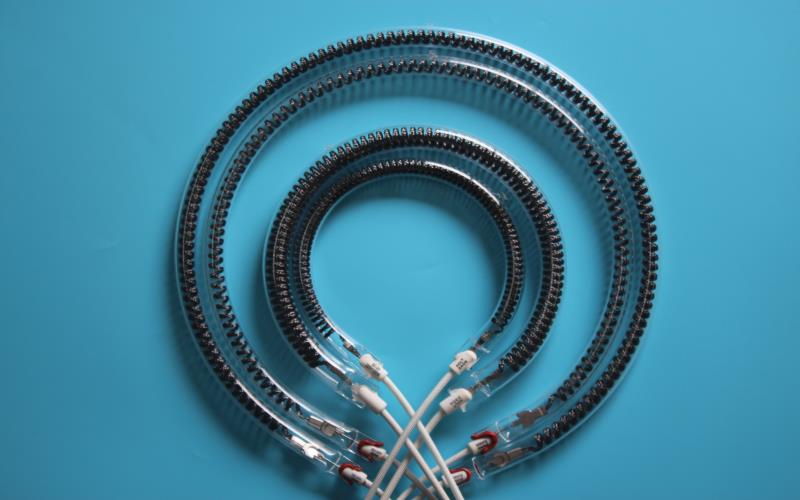When it comes to efficient and modern heating solutions, quartz heaters have been gaining popularity for their ability to provide consistent warmth in an energy-efficient manner. Whether you’re looking for a way to heat a small room or want to understand the science behind it, this article will break down everything you need to know about quartz heating—what it is, how it works, and why it might be the right choice for your home or office.
What is Quartz Heating?
At its core, quartz heating refers to the use of Quartz Heating Element to produce heat, typically in the form of infrared radiation. These heaters are designed to work differently from conventional heating methods, which rely on warming the air in a room. Instead, quartz heaters use infrared light to directly heat objects and people in a space, much like how the sun warms the Earth.
But why quartz? Quartz is a highly efficient material that can withstand high temperatures and is known for its excellent thermal conductivity. This makes it an ideal candidate for creating heating elements that can provide consistent and long-lasting warmth.
How Does Quartz Heating Work?
To understand how quartz heating works, let’s break it down step by step:
- Quartz Heating Element: A quartz heater typically consists of a quartz tube or rod, which is wrapped around a heating coil. When you turn on the heater, electricity flows through the coil, causing it to heat up. The quartz tube or rod that surrounds the coil helps to intensify the heat generated.
- Infrared Radiation: Unlike traditional heaters that rely on convection (heating the air) or conduction (heating surfaces in direct contact with the air), quartz heaters emit infrared radiation. Infrared radiation is essentially a form of electromagnetic energy, similar to the warmth you feel when standing in sunlight.
This radiation doesn’t heat the air, but instead directly heats the objects, surfaces, and people in the room. As a result, the warmth feels more immediate and comfortable. Infrared energy is absorbed by these objects, which in turn release the heat slowly, creating a more consistent and steady warmth throughout the room.
- Efficiency and Speed: One of the key benefits of quartz heating is how quickly it works. Since the heater doesn’t need to warm up the air first, the room feels warmer almost immediately. In contrast, conventional heaters can take a while to heat the entire room before you start feeling any warmth.
Key Advantages of Quartz Heating

-
Energy Efficiency
Quartz heating systems are incredibly energy-efficient. Traditional heaters can waste a lot of energy by heating the air, especially in poorly insulated spaces. With quartz heaters, however, the infrared radiation directly warms objects and people, which makes the process much more efficient. You’ll use less energy to reach the same level of comfort, which can result in lower electricity bills.
-
Targeted Heating
Quartz heaters offer a more targeted heating experience. If you’re sitting in a specific part of the room, the infrared radiation will directly heat you, instead of wasting energy on heating the entire space. This means that in smaller or specific zones, quartz heaters can be much more effective than other heating methods.
-
Silent Operation
One of the common complaints with traditional heaters is the noise they generate. Quartz heaters, on the other hand, operate quietly. Since there are no fans or mechanical components that need to be moved, you get a much more peaceful and comfortable environment. This makes quartz heaters ideal for bedrooms, offices, or any space where noise can be a distraction.
-
No Drying of the Air
Traditional heating methods, especially those that use convection, tend to dry out the air over time. This can lead to dry skin, irritated eyes, or even static electricity buildup. Quartz heaters, however, don’t dry out the air because they don’t rely on heating it directly. This makes them a better option if you’re sensitive to dry indoor environments.
-
Environmentally Friendly
Because quartz heaters are energy-efficient, they can also be more eco-friendly compared to traditional heating systems. Using less electricity not only saves you money but also reduces your carbon footprint, especially if your energy source is renewable.
Types of Quartz Heaters
Quartz heaters come in various designs and forms, each suited to different needs and spaces. The two most common types are:
-
Portable Quartz Heaters
These are small, often compact devices that can be moved from room to room. They usually come with a stand or a wall mount, making them versatile and easy to use. Portable quartz heaters are great for heating specific areas or rooms without needing to heat the entire home.
-
Fixed Quartz Heaters
These are typically installed on a wall or ceiling and are designed to heat larger areas or specific zones of a building. Fixed systems may be ideal for heating rooms with high ceilings or open spaces. They are more permanent solutions, often used in larger homes or businesses.
Is Quartz Heating Right for You?
Now that you understand how quartz heating works and its benefits, the next question is: Is it the right solution for your heating needs?
Here are a few factors to consider when deciding:
Room Size: Quartz heaters are perfect for small to medium-sized rooms, or if you need a localized heating solution. If you’re looking to heat a large home, you might want to consider combining quartz heaters with other systems.
Energy Efficiency Goals: If you’re focused on reducing energy consumption and costs, quartz heaters are a great option due to their efficiency. They help you avoid heating unnecessary spaces by focusing on direct heating.
Air Quality: If you suffer from allergies or are sensitive to dry air, quartz heaters can be a better option compared to conventional heating methods. They do not dry out the air, and they don’t stir up dust or allergens like forced-air systems do.
Budget: While quartz heaters are generally affordable, their upfront cost can vary depending on the size and features. It’s worth comparing with other heating methods to determine which fits your budget and needs.
Quartz Heating vs. Other Heating Methods
Quartz Heating vs. Convection Heaters
Convection heaters rely on circulating warm air to heat a room, which can be less efficient since they have to heat the entire air volume. Quartz heaters, on the other hand, heat objects directly and do not waste energy heating the air. For faster, more direct warmth, quartz heaters have the edge.
Quartz Heating vs. Oil-Filled Radiators
Oil-filled radiators use heated oil to warm up the metal components of the radiator, which then radiates heat into the room. While they provide consistent heat, they can take a while to warm up and are typically larger and bulkier. Quartz heaters provide quicker results and are more compact.
Conclusion
Quartz heating is a reliable, efficient, and eco-friendly option that is gaining momentum in modern homes and businesses. By leveraging infrared radiation, these heaters offer a more comfortable, targeted, and cost-effective way to heat spaces. Whether you’re upgrading your heating system or simply looking for a reliable supplemental heater, quartz heating can offer a range of benefits, making it a smart choice for many.
As technology continues to evolve, we can expect even more advancements in the efficiency and functionality of quartz heaters. So, if you’re considering a switch to quartz heating, you’re certainly on the right track for a more energy-efficient and comfortable environment.


